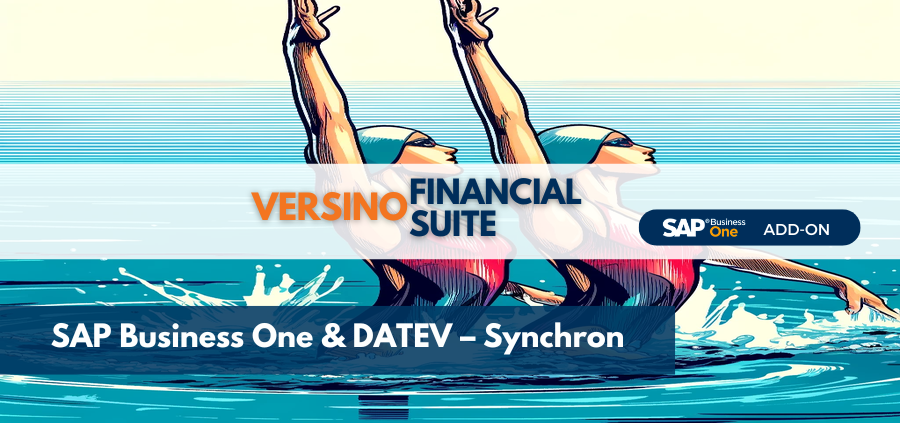HGB and IFRS pursue different objectives and approaches in accounting. While the HGB focuses on prudence, creditor protection and a close connection to tax law, IFRS emphasises shareholder value and a more optimistic, future-oriented presentation. These differences have a major influence on how companies present and value their financial results and positions. In a globalised business world, IFRS offers a more standardised and internationally comparable information basis, which is particularly advantageous for globally active companies and their investors. SAP Business One offers advanced functions to fulfil the requirements of both local HGB and IFRS and supports companies in overcoming the systematic challenges of IFRS.
Basic philosophies
IFRS and HGB pursue different objectives. This should be kept in mind in all the following steps.
The HGB is strongly characterised by the principle of prudence and creditor protection. This approach emphasises conservative valuation and tends to lead to cautious accounting and profit reporting. In addition, the HGB is closely linked to German tax law, which is reflected in the frequently practised standardised balance sheet for commercial and tax law purposes.
In contrast, IFRS is more strongly orientated towards shareholder value. The aim of this approach is to maximise the value of the company for shareholders. This tends to lead to a higher reported profit and a more optimistic presentation of the company's finances.
Specific differences between IFRS and HGB
The first step in implementing IFRS in SAP Business One is to understand and analyse the specific differences between IFRS and HGB.
The most common differences include aspects such as Provisionsvaluation of inventories, foreign currency valuation, revenue realisation and the valuation and amortisation of Capital assets. It is crucial to identify and minimise these differences in order to ensure correct reporting.
Practical effects on accounting
A significant difference between IFRS and HGB lies in the treatment of provisions. While HGB tends to recognise higher provisions based on the principle of prudence, IFRS tends to recognise lower provisions based on best-case considerations.
There is another significant difference in the cash flow statement. Under HGB, there is no obligation to prepare a separate cash flow statement to be prepared. IFRS, on the other hand, integrates such a statement into the reporting, which leads to a more transparent presentation of financial liquidity.
As far as the operating result is concerned, this is reported separately under IFRS, whereas it is not explicitly recognised under HGB, but is identifiable. The operating result reflects the company's performance in its core business without speculative transactions.
Accounting and valuation in IFRS & HGB
There are significant differences in accounting between IFRS and HGB. The HGB is based on amortised acquisition and production costs as the upper valuation limit. IFRS, on the other hand, allows a market-orientated and future-oriented valuation, which can go beyond acquisition and production costs. This can be seen, for example, in the measurement of intangible assets and deferred taxes.
Adaptation of the chart of accounts and implementation of parallel accounting systems
SAP Business One makes it possible to chart of accounts in order to integrate new IFRS accounts and rename existing accounts if necessary. This adjustment creates the prerequisite for a clear separation and accurate posting in accordance with both standards. In parallel, the implementation of parallel accounting systems is required to record both IFRS and local postings. This means the introduction of three types of accounts: local legislation, IFRS and general purpose, to cover all scenarios arising from the adoption of IFRS.
Compliance with IFRS 15 with SAP Business One
One particular aspect of IFRS, IFRS 15, deals with revenue recognition from customer contracts and places specific requirements on accounting and financial reporting. The key steps of IFRS 15 include identifying the contract with a customer, identifying all individual performance obligations within the contract, determining the transaction price, allocating the price to performance obligations and recognising revenue when the performance obligations are satisfied.
To fulfil IFRS 15 in SAP Business One, companies should use the Framework Agreement to document the contract with the customer. This includes the recording of articles, quantities, prices and delivery frequency. When the product or service is delivered, an AR document is created that is linked to the framework agreement and therefore automatically adopts all the specified settings. Sales are recognised when the AR invoice is posted.
Procedure for the implementation of IFRS in SAP Business One

For an effective implementation of IFRS in SAP Business One, you should add additional IFRS accounts as required and rename existing accounts accordingly. Detailed instructions can be found in the section on the chart of accounts.
It is also important to adjust the configurations that determine to which G/L accounts transactions are posted in SAP Business One. You can find more information on this in the instructions under Account determination G/L accounts.
Automatically post IFRS entries
IFRS postings are often carried out manually. Discuss with your SAP partner and your company's accountant the possibility of posting certain IFRS entries automatically.
Check the default values for reference and user-defined fields in journal entries and adjust them if necessary.
If you automate or semi-automate internal reconciliation processes, you can define certain reference fields as rules for automatic reconciliation or as parameters for semi-automatic reconciliation. These settings influence the reconciliation process, not the IFRS directly.
Defining financial report templates for IFRS
Create specific financial report templates for IFRS that contain a combination of IFRS and general accounts. If you want to use a G/L account more than once in a template, tick the 'Allow multiple linking to financial report templates' option in the G/L account details window. This is particularly useful if you want to show separate debit and credit sides of an account in your balance sheet instead of the total balance - one side under assets, the other under liabilities.
Check balance sheet templates and reports
Check which accounts are linked to which balance sheet templates by selecting the option 'G/L account item in balance sheet templates' under Extras > Queries > System queries.
Specify which G/L accounts are to be used in which reports. For instructions on how to find and select the relevant G/L accounts for a report, see 'Finding G/L accounts for inclusion in financial reports/period-end closing'.
If you have not already done so, check and adjust your company's user authorisations to the IFRS regulations. Carry out all necessary parallel postings for IFRS manually.
Before you create the following reports, define the selection criteria for the reference fields and user-defined fields that are required in your company for IFRS:
- G/L account report
- document journal
- Trial Balance
- balance sheet
- Profit and Loss Account
Prepare the financial reports required for IFRS and the following inventory reports:
- Inventory valuation report
- Bearing evaluation simulation report
- Stock audit report
Setting up reference and user-defined field links for IFRS in SAP Business One
With SAP Business One, you can differentiate and analyse the impact of business activities in your financial reports based on the values in reference and custom fields.
SAP Business One provides a number of reference fields in journal entries that are used to capture specific information from source documents. These fields allow values from the source document to be copied into the journal entry. A source document can be any document in SAP Business One that generates journal entries and therefore affects the financial accounts.
In SAP Business One, the reference fields are pre-assigned with predefined values depending on the type of source document. These values can be overwritten when setting up your system, e.g. for IFRS purposes, or when manually creating a journal entry. A typical example of this is if your company needs to record different or additional information in journal entries to fulfil daily transactions, IFRS requirements or local, industry-specific or legal requirements.
FAQs

Accounting & bookkeeping with SAP Business One

SAP Business One-faster, simpler, clearer!

Input computer processing with human intelligence

SAP Business One - Booking of shipping & freight

SAP Business One and DATEV - Synchronised




